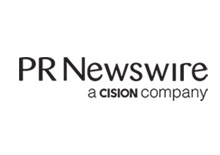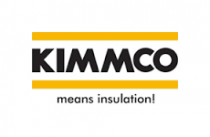CRU: Wire and Cable in Renewables, Part 1: Onshore wind - an essential part of the energy transition roadmap
LONDON, Aug. 10, 2020 /PRNewswire/ -- Limiting the increase in global average temperature to, or below, 1.5-2C versus the pre-industrial level is the ultimate goal as outlined in the Paris Agreement. To realise a low-carbon future, this requires a unified large-scale transition to clean energy and electricity generation by renewables plays a critical role in this shift. Renewables are expected to provide 30% of global electricity generation by 2024, according to the International Energy Association (IEA).
Beyond this, many nations are also injecting increasing investment into the green revolution as a lynchpin for economic recovery in a post-COVID-19 world. With renewable technologies typically more cable intensive than traditional fossil fuel-based generation methods, it will become an increasingly important driver of future wire and cable demand.
In this four-part series of Insights, CRU's Wire & Cable Team explore three of the most cable-intensive renewable technologies and take a look at future capacity growth and implications to cable demand. While CRU have made part 1 publicly available, parts 2-4 remain exclusive to CRU's Wire and Cable Market Outlook subscribers:
1. Onshore wind: an essential part of the energy transition roadmap
2. Offshore wind: cable intensive and rapidly growing
3. Solar: a certain bright spot for future wire and cable demand
4. Summary: a comparison of key renewable technologies and cable demand
Industry background
Over the last four decades, the evolution of the onshore wind industry has been remarkable in terms of installations, technology advancements and very importantly, cost reductions. By the end of this year, onshore wind is set to consistently offer a less expensive source of new electricity than the lowest-cost fossil fuel alternative in most regions across the world, according to the International Renewable Energy Association (IRENA).
The deployment of onshore wind has accelerated dramatically since 2010. Among all renewable energy technologies, onshore wind, after hydropower, has dominated the renewables industry, followed by solar. Onshore wind is expected to drive overall growth in renewables across several regions both in the mid- and long-term. Despite it requiring less cable than both offshore wind and solar, CRU estimates onshore wind still consumes approximately twice the amount of cable compared to a natural gas plant and four times more than a coal-fired plant, in terms of conductor kt per GW capacity installed. Undoubtedly, onshore wind deployments are a key driver of global insulated metallic wire and cable demand, especially with regards to power cable.
Read the full story:
https://www.crugroup.com/knowledge-and-insights/insights/2020/wire-and-cable-in-renewables-a-four-part-series/
Read more about CRU: http://bit.ly/About_CRU
About CRU
CRU offers unrivalled business intelligence on the global metals, mining and fertilizer industries through market analysis, price assessments, consultancy and events.
Since our foundation by Robert Perlman in 1969, we have consistently invested in primary research and robust methodologies, and developed expert teams in key locations worldwide, including in hard-to-reach markets such as China.
CRU employs over 280 experts and has more than 11 offices around the world, in Europe, the Americas, China, Asia and Australia - our office in Beijing opened in 2004 and Singapore in 2018.
When facing critical business decisions, you can rely on our first-hand knowledge to give you a complete view of a commodity market. And you can engage with our experts directly, for the full picture and a personalised response.
CRU - big enough to deliver a high-quality service, small enough to care about all of our customers.
View original content to download multimedia:http://www.prnewswire.com/news-releases/cru-wire-and-cable-in-renewables-part-1-onshore-wind--an-essential-part-of-the-energy-transition-roadmap-301108340.html
SOURCE CRU




